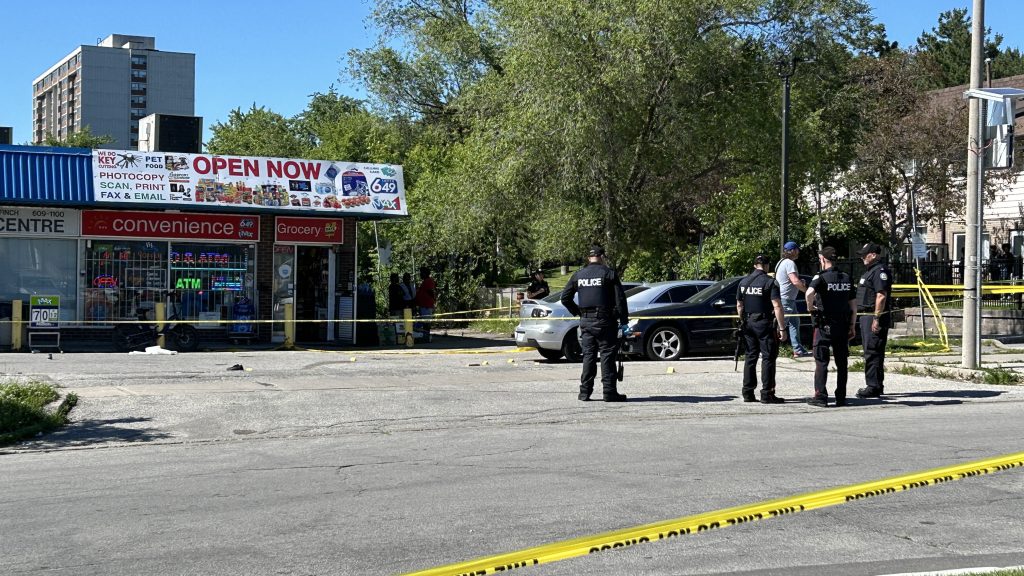Personal librarians helping students get through first-year hurdles
Posted March 17, 2016 11:40 am.
Last Updated March 18, 2016 12:52 pm.
This article is more than 5 years old.
First-year students have a lot on their plates: juggling courses and assignments, part-time jobs, dealing with being on their own for the first time, and surviving the campus atmosphere are just some of the hurdles. So a little help can go a long way. At the University of Toronto the assistance comes in the form of a personal librarian.
Since the program’s inception at U of T in 2012, first-year students in the Arts and Science and Applied Science and Engineering undergraduate programs are matched with a personal librarian who can help them tackle the behemoth libraries around campus.
The program gives students a head start in their campus survival by introducing them to what library research is like at the university level.
“Because we have such a large student body, it is not scalable to go into every first-year class to them know about the resources, so we found that matching a student to a librarian via email and sending them just-in-time information throughout the academic terms … seem to work,” says Heather Buchansky, the student engagement librarian who heads the personal librarian program at the St. George Campus.
The personal librarian program is not singular to U of T. Similar programs exist at York University, Brock University, the University of Victoria and the University of British Columbia. But the idea of pairing students with a personal librarian started in the U.S, with Yale University among the first to administer such a program.
The need for the program is essential in today’s generation, advocates say, because while information is readily available through search engines, it’s not sufficient when researching and writing papers.
“The information landscape has changed in the last 20 years. Students are faced with just being able to Google things and think that’s good enough,” Buchansky says. “There are so many online sources that can help with their research, but it may not be the best sources.”
U of T’s program started in 2012
When the program started four years ago, 1,000 first-year Arts and Science students were randomly selected, each one paired with one of the 10 librarians in the project. The program was extended to first-year Applied Science and Engineering students the following year. This year, each first-year student in both faculties was paired with one of 49 librarians – 45 in Arts and Science and four in engineering. Similar programs also exist for graduate students at OISE and the Faculty of Information.
Buchansky says this year, just over 5,000 Arts and Science and around 1,200 engineering students received an initial ‘welcome’ email from their personal librarian, informing them what the program is about, information of interest to the student, and that they can reach out for research help if needed. Additional emails are sent out during the academic year, especially during exam time.
“No action is needed” from the student, she says, unless they want to reach out. Students can choose to opt out of future emails from their personal librarian, but very few have done so. If students want personalized help, their librarian is just an email away. They can either get further help via email or request in-person consultations.
The university has not hired extra librarians for the program, so those taking part are doing so above their regular tasks.
So far, the program only exists at the St. George Campus since the Scarborough and Mississauga campuses have a smaller student body. “There are so many classes, so many students and not enough librarians,” Buchansky says.
Universities reaching out to first-year students
Anne Kidder, executive director and founder of People for Education, says such programs, including the one at U of T will help students in the long run, especially those struggling during first year. She says evidence shows students in first year either don’t cope well with the demands of post-secondary education or drop out.
“It’s often in the first year that things kind of go off the rails,” Kidder says. “[They’re] navigating a new world, and for a lost of them, coping with workload and also living on their own.”
The personal librarian program, along with on-campus counselling centres, tutoring sessions, course tutorials, study groups, can help students transition from high school to university life.
“[Universities] are trying to ensure you get through that first year where you’re learning a whole new set of skills,” Kidder says.
The transition from high school to university can be a difficult one for some students. Buchansky says the program at U of T started “as a way to ease the transition.”
“First-year students are coming from so many places, from out of the city, province and country, so at least they’ve got a personal connection with one person.”
Kidder doesn’t think having a personal librarian is going to make students take the easy way out or slouch through their education.
“I don’t think anybody is going to expect that they’ll have a personal librarian with them the rest of their lives.”
“[When] people ask for help, it shows that they’re looking to learn,” Buchansky says.








